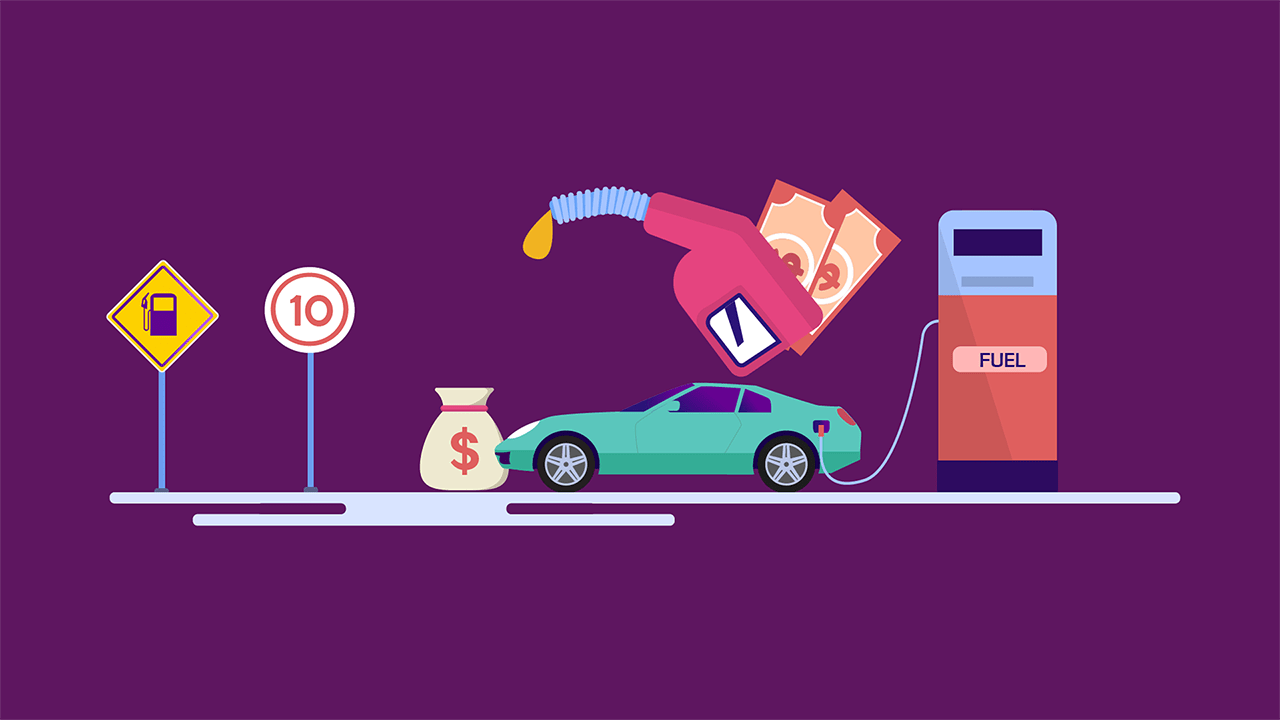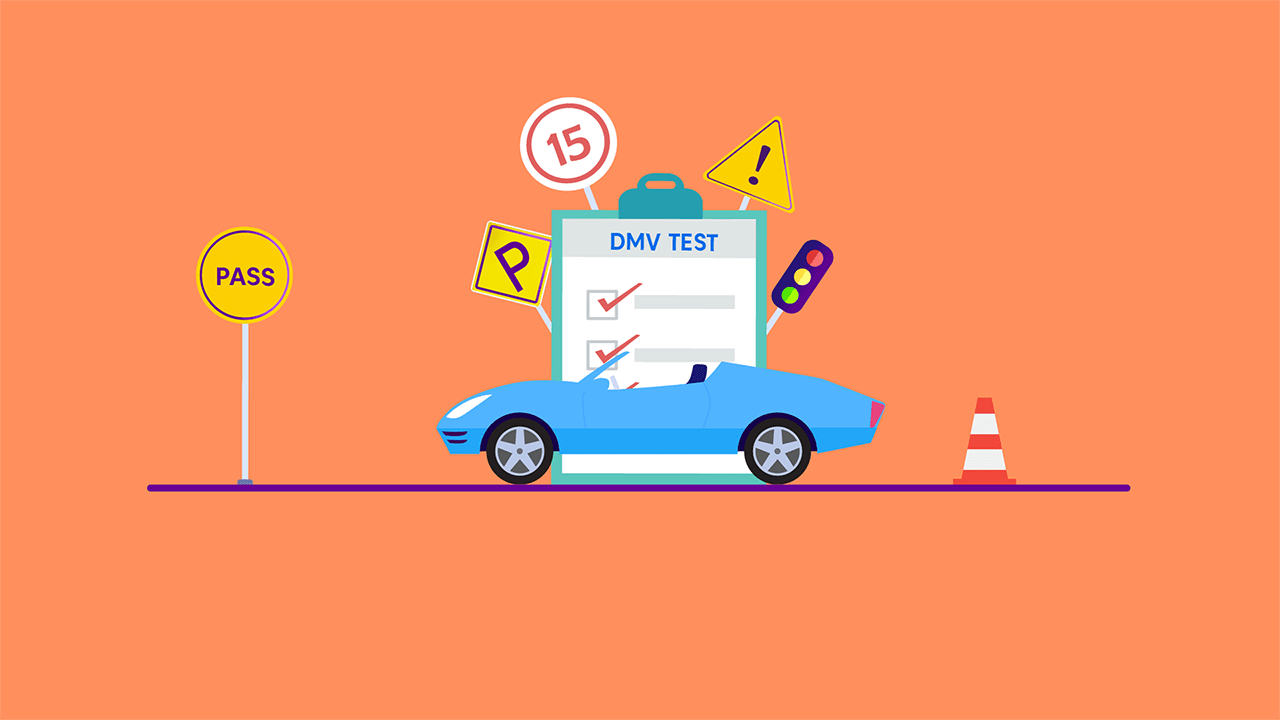How to Parallel Park | Easy Steps & Tips by Expert
By Ujala Nadeem on Feb 16, 2024Contents
- What is Parallel Parking?
- How to Parallel Park Properly: Easy-Peasy Steps to Follow
- Parallel Parking Tips: How to Always Get it Right!
If the thought of parallel parking makes your palms sweat, you're not alone. Lots of drivers feel the pressure to park perfectly without having their driving skills questioned and, of course, bumping into other vehicles.
Parallel parking is tricky and may be considered the most difficult of parking types. However, it is an essential skill to have, especially if you encounter tight parking spaces on the daily.
So, if you are ready to level up your parking game, here's everything you need to know about how to parallel park, including some easy practice tips to effortlessly ace this skill.
What is Parallel Parking?
Parallel parking is a maneuver used to park a vehicle parallel to the curb between two other parked vehicles. It involves a sequence of steps that allow a driver to position their car correctly in a limited space along a street, typically between two other cars.
Let’s make it simpler for you: Picture a scenario where you're driving along a street. There's an available parking spot between two cars. Parallel parking is the technique used to slide your car into that spot.
How to Parallel Park Properly: Easy-Peasy Steps to Follow
Parallel parking can pose a challenge for new drivers, seniors, and everyone in between alike. The very thought of it can stir anxiety in any driver. However, with the right approach, it doesn't have to be a nerve-racking experience.
Here are some straightforward parallel parking steps to master this skill.
Step 1: Align Your Car
Have you found the perfect spot after assessing the parallel parking dimensions? Good! Let’s get started.
The first step, often referred to as "aligning" or "positioning,” involves driving alongside the car in front of the available parking space. This step is crucial as it lays the groundwork for the subsequent maneuvers involved in smoothly fitting your car into the parking spot. To do this, you must:
Approach the spot: Drive slowly towards the open space until you're parallel with the car parked ahead of it. Create space: Leave about two feet between your car and the one in front of the empty spot.
Step 2: Check Your Mirrors
Once you've aligned your vehicle parallel to the car in front of the empty spot, you must check your surroundings. The "parallel parking mirror trick" is a technique some drivers use to assist with parallel parking. It involves using side mirrors to gauge the distance between the car and the curb and to ensure you're aware of any approaching vehicles or pedestrians. Here's how it works:
Adjust your side mirrors: Once you’ve aligned the car, tilt both side mirrors downward. This adjustment allows you to see the curb or the line of the parking space.
Reverse and watch the mirrors: Begin reversing slowly while observing the position of the curb or line in your side mirrors. When the curb or line appears to be in line with the bottom of the mirror, it's an indicator that your car is parallel and appropriately positioned for parking.
Step 3: Start Reversing
Gently shift into reverse gear, maintaining a controlled speed. Turn your steering wheel fully towards the curb as you begin to move backward. This action allows your car to start angling into the parking spot while maintaining a safe distance from the vehicles ahead and behind.
As you start this backward motion, maintain awareness of your surroundings by monitoring your mirrors and blind spots for any approaching traffic or pedestrians. This applies not just to parallel parking but to other parking types as well.
Step 4: Straighten the Steering Wheel
Once your car's front end aligns with the rear bumper of the vehicle ahead of the empty space, it's time to make adjustments. Straighten your steering wheel by gradually turning it back to its original position while keeping your vehicle in reverse. This helps your car slide smoothly into the parking spot, ensuring it's positioned parallel to the curb.
It's a critical move that ensures your vehicle fits snugly into the available space while maintaining a safe distance from other cars. Keep a keen eye on your surroundings, checking mirrors and blind spots for any potential obstacles or oncoming traffic.
Step 5: Start Turning the Steering Wheel to the Left
Once you've straightened your car parallel to the curb and adjusted your vehicle's position between the other cars, it's time to fine-tune. Begin turning your steering wheel to the left while continuing to reverse slowly. This maneuver guides your car deeper into the parking space while ensuring it remains parallel to the curb. The gradual left turn helps position your vehicle within the confines of the designated spot, ensuring a secure and neatly aligned parallel park.
Step 6: Assess Your Proximity
When gradually turning your steering wheel left while reversing, assess your proximity. Keep an eye on your side mirrors and glance over your shoulder to check the distance between your vehicle and the curb. Aim to position your car within a safe distance from the curb, ensuring it's neither too close nor too far away.
Additionally, observe the space between your car and the vehicles in front and behind you, maintaining a reasonable gap for easy maneuvering in and out of the parking space.
Step 7: Adjust Your Position
Once you've assessed your proximity to the curb and the surrounding cars, it's time to make any necessary adjustments. If you find your car isn't perfectly aligned or positioned within the space, make slight corrections.
Gently adjust your steering wheel as needed, either by straightening it a bit more or making a minor readjustment in the opposite direction, depending on your car's position. These small tweaks ensure a neat and accurate parallel park within the designated area, allowing for a smooth exit and ensuring you're not encroaching on the space of neighboring vehicles.
Step 8: Pay Before You Leave
Once you've successfully parallel parked your car, it's important to check for any parking meters nearby. Make sure to feed coins or use any designated payment method to cover the duration of your stay. This step ensures that you're meeting the parking requirements of the area and avoids any potential penalties. Always double-check the parking regulations in the area to ensure you're adhering to the specific rules and time limits.
Step 9: Reverse the Car
Ready to leave? To depart from a parallel parking space, the first step is to shift into reverse gear. Ensure that your surroundings are clear by checking mirrors and blind spots for any approaching traffic or pedestrians. Gently start reversing your vehicle, using the accelerator cautiously to maintain a slow and controlled pace. Keep a steady hand on the steering wheel to guide your car backward out of the parking space while maintaining awareness of the area behind and around your vehicle.
Step 10: Turn Your Steering Wheel to the Left
As you continue reversing out of the parking spot, it's time for the second step. Begin turning your steering wheel to the left to angle your car away from the curb. This maneuver allows your vehicle to move away from the parked cars smoothly.
Keep a close eye on your surroundings and adjust the steering gradually to guide your car into the flow of traffic. This left turn helps position your car to merge safely into the lane, allowing you to navigate and join the road in the direction you intend to travel.
Parallel Parking Tips: How to Always Get it Right!
Here are some simple tips to help you become a parallel parking pro.
Tip #1: Start with the Fundamentals
Before tackling parallel parking, consider honing your skills in partial back-ups, angle parking, and 90-degree parking. These fundamental maneuvers serve as building blocks for becoming a parallel parking master by providing you with the necessary confidence and control needed to navigate and park effectively in various situations.
Tip #2: Patience is Key
When it comes to parallel parking, don't rush the process, especially if you're feeling nervous. Take each step slowly and methodically. This will enable you to utilize your reference points effectively and make precise adjustments.
Tip #3: Practice Regularly
Practice makes progress! The most valuable advice for mastering parllel parking is to practice regularly. While tutorials and instructions are helpful, there's no substitute for hands-on experience. Don't shy away from making mistakes; they're an integral part of the learning process. The more you practice, the quicker you'll grasp the intricacies of parallel parking. Each mistake serves as a stepping stone toward improvement.
Tip #4: Don’t Forget Your Turn Signals
As a driver, you must be respectful and courteous, and a huge part of this is following the traffic rules. When parallel parking, using your turn signals is a must. They signal your intention to park and inform other drivers of your plan, helping them anticipate your actions and adjust their own driving accordingly.
Conclusion
Becoming a parallel parking pro may seem daunting, even impossible, at first, but it's a skill that can become surprisingly easy with practice.
Once you grasp the finesse of parallel parking, you’ll feel more confident and will no longer have to scour for conventional parking spaces; instead, you can effortlessly slide into those tight spots.
Happy driving – and parking!


